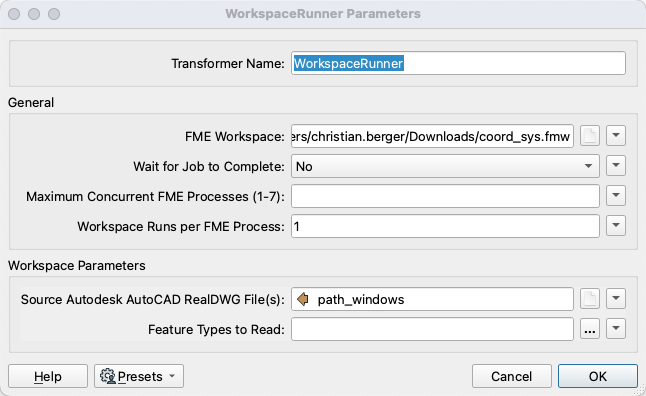Hi, I'm trying to run the attached workspace on a series of files to check the coordinate system then output the filename and whether it's georeferenced or not.
I want to extend this functionality later, but am struggling to just run it on files instead of the features within.
Can someone please explain the best way to achieve this - my current way is to run a separate workspace runner and direct it to this, I don't think I'm quite getting it though still.
I'm also running a different workspace for internal feature checks, and assume this would be the way to go - to break to an internal feature check, and file check workbench (can't think of clean way to organise the data otherwise.)
Thanks!







 Note, this is only on FME Form so you'll need to manually start the task. If you want to have this be automated or triggered by an event like a schedule, when the directory is modified, or any of the other available triggers, you can publish the same workspace to FME Flow for use in an
Note, this is only on FME Form so you'll need to manually start the task. If you want to have this be automated or triggered by an event like a schedule, when the directory is modified, or any of the other available triggers, you can publish the same workspace to FME Flow for use in an